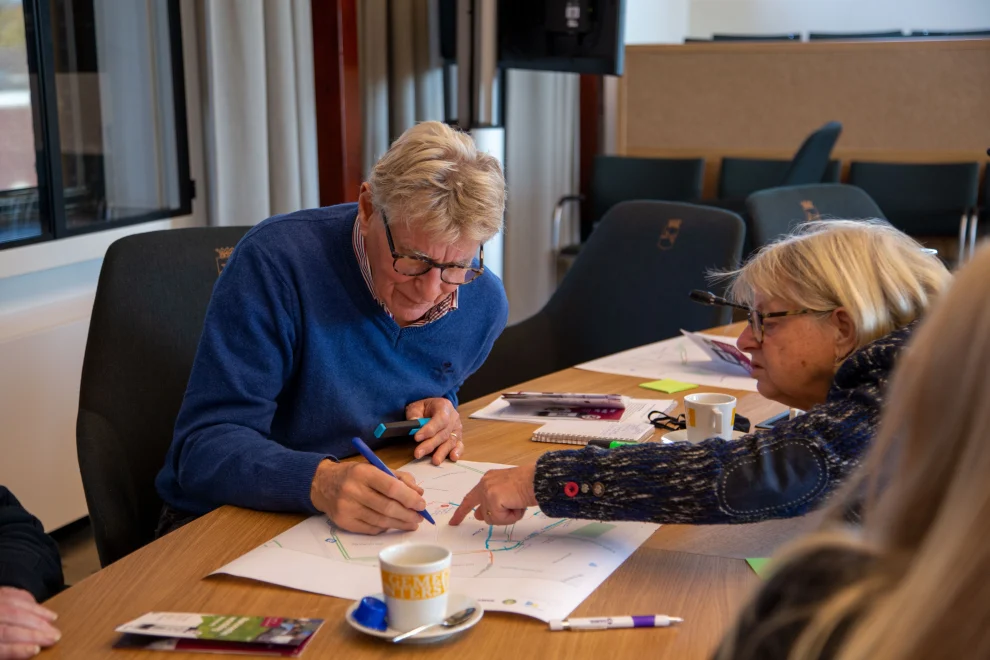What is social design and why is it relevant to researchers?


What is social design? Social design is a design philosophy in which solutions are developed with the goal of creating social impact. This makes it relevant not only to designers, but also to academics, policy makers and professionals who want to make a difference.
In this article, we explain exactly what social design is, how it differs from other design principles and why it is such an appropriate approach for addressing social challenges.
Social design revolves around three fundamental elements:
The focus is on challenges facing people as individuals or as a society. Consider
themes such as inclusiveness, sustainability or well-being.
It’s not just about the idea or solution, but also the translation into a usable and context-specific form. After all, without good design, the best knowledge remains untapped.
In social design, a solution is not successful until it is actually used. Without a proven impact, there is no real solution.
Social design, in short, is distinguished by a strong focus on the goal: social impact. The form – and that includes our designers – is secondary to the goal. A good social designer goes for the form that will make the most difference. In real lives, for real people. Not for the form that sounds hip or is conceived under a system ceiling.
Many academic research and innovations do not reach practitioners simply because they do not connect well with end users’ perceptions. Social design bridges this gap between knowledge and use.
Take a subway map, for example: a detailed, topographic map provides accurate information but is too complex for travelers. A simplified map may be less realistic and leave a lot out, but it makes the map clear and useful for the purpose.
The same goes for transferring new knowledge and advice from research. A professor can publish an extensive report on lifestyle at VMBO, but how does that knowledge reach a 13-year-old girl? Social design helps to make this translation by turning knowledge into practical and accessible solutions.
Social design addresses social challenges such as sustainability, inclusiveness and well-being. This avoids spending resources on solutions without real demand or application.
Social design delves into the context and needs of users. This creates solutions that are not only effective during a project, but continue to work afterwards.
Impact is the goal, and implementation is therefore prioritized from the beginning. Designing with the end user in mind significantly increases the likelihood of sustainable impact.
Co-creation actively involves end users and stakeholders. This increases ownership and the likelihood of successful implementation.
The process brings together different disciplines, from researchers to end users, and promotes collaboration and understanding among these groups.
Social design is a philosophy that revolves around creating solutions with social impact. A social designer bridges the gap between knowledge and practice and helps bring innovations and research results to life. Publications, reports and innovations are often aimed at peers or policy makers, but rarely reach the people who are the ultimate users. This is precisely where the added value of social design lies: it translates academic knowledge into forms that are practically useful and accessible. Shkorey is an excellent example of this translation process; the final report of this research was published in spring 2024. Shkorey and other projects are additionally highlighted in our blog on example cases involving social design.
Social design can support researchers in addressing complex social issues while increasing the engagement of target audiences. This often leads to valuable results, both academically and socially. Are you considering integrating social design into your research, but not yet sure how? We are happy to think with you, for example, about how to incorporate an iterative approach into your research application. Join our Monthly Online Question Time or ask Johan directly via mail or Linkedin. We also have in our knowledge vault much information available. For example, read about how design can function as a research tool and view work by researchers who have serious gaming as a design strategy have applied.
